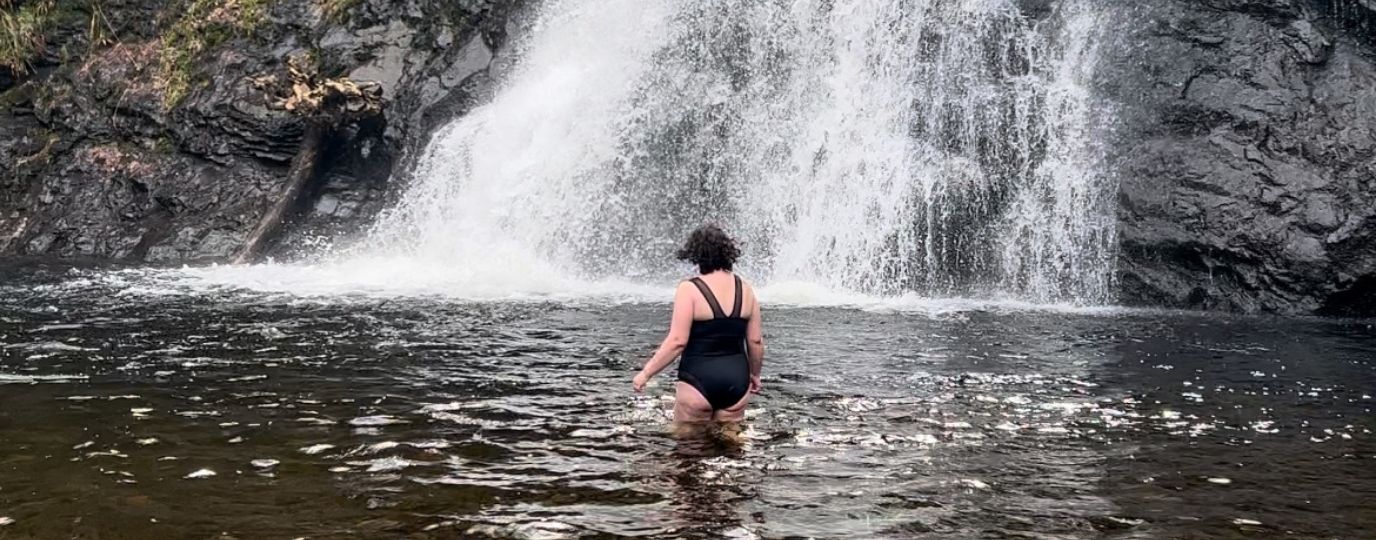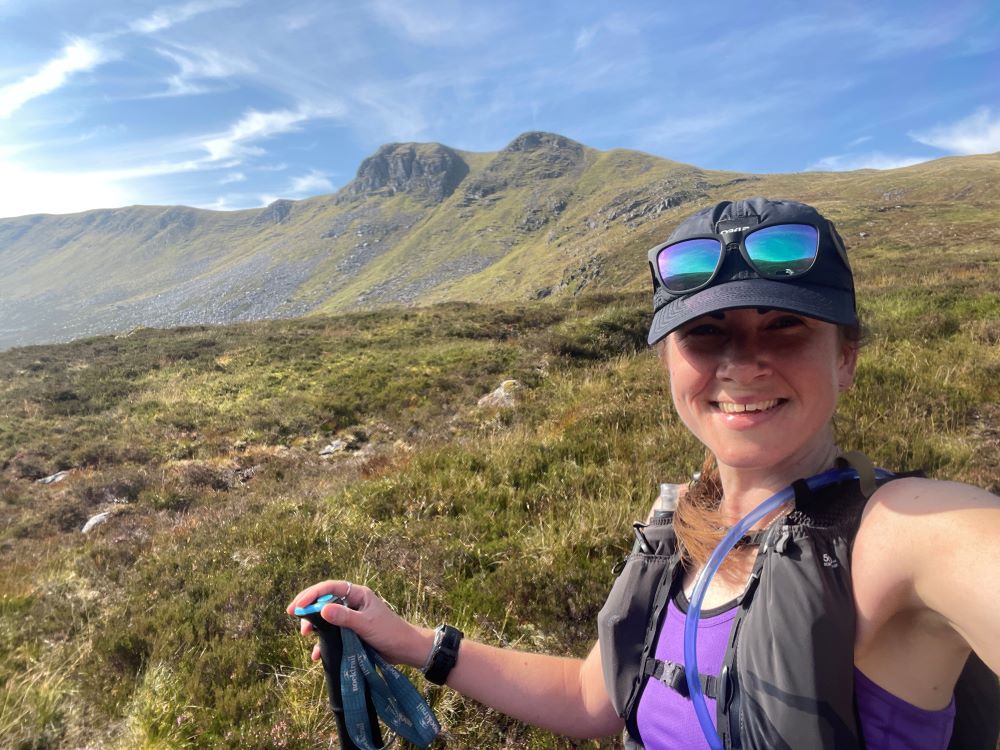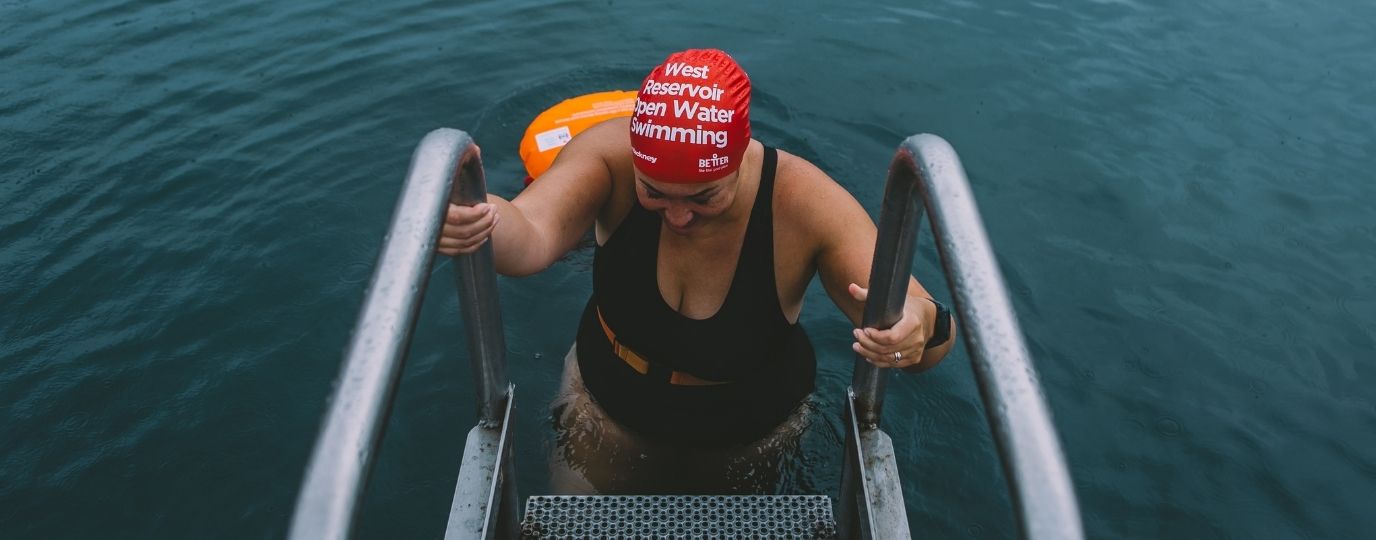Wild swimming is a hugely popular activity with more and more people enjoying the mental and physical health benefits each year. However, any time you are around water there are risks. Here are some ways to keep safe while wild swimming.
We teamed up with Taylors of Harrogate and our OS Champions to look at how to stay safe before, during and after a cold water dip or wild swim. Big thanks to Natasha Sones and Tom & Essi Troughton for all of their amazing cold water swimming tips.
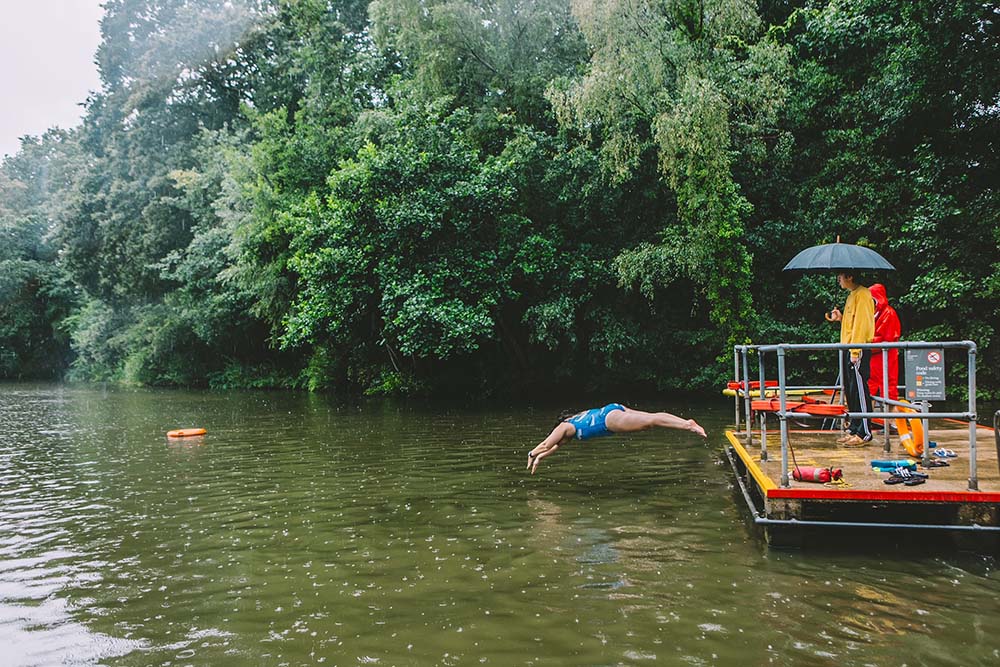
How to Choose a Safe Location for Wild Swimming
Key to wild swimming safety is knowing where the good, safe swimming spots are. Local knowledge is key. Word of mouth, guidebooks, and wild swim groups.
Take Responsibility For Yourself
However is no such thing as a safe swim spot, only a safe swimmer. It’s really important that you consider what your own swimming ability is. The guides you find online are guides, but you really have to think about it when you get there and assess if for yourself. Take responsibility for yourself.
Safety Tips Before You Start Wild Swimming
Check the weather and flow:
Speak to kayakers, harbour masters, lifeguards etc to find out about swimming spots. Look at access points, tides, educate yourself with information about rips and currents. Unless you’re an exceptionally strong swimmer, stay away from rivers with a fast flow. You can check how fast the river is by throwing a leaf into the water and watching it float downstream.
Adverse weather can turn even the safest of swimming spots into a danger zone. Heavy rain and wind can cause rivers to become unpredictable. In addition, take extra care swimming after a storm; high winds can cause hazardous debris to accumulate beneath the surface
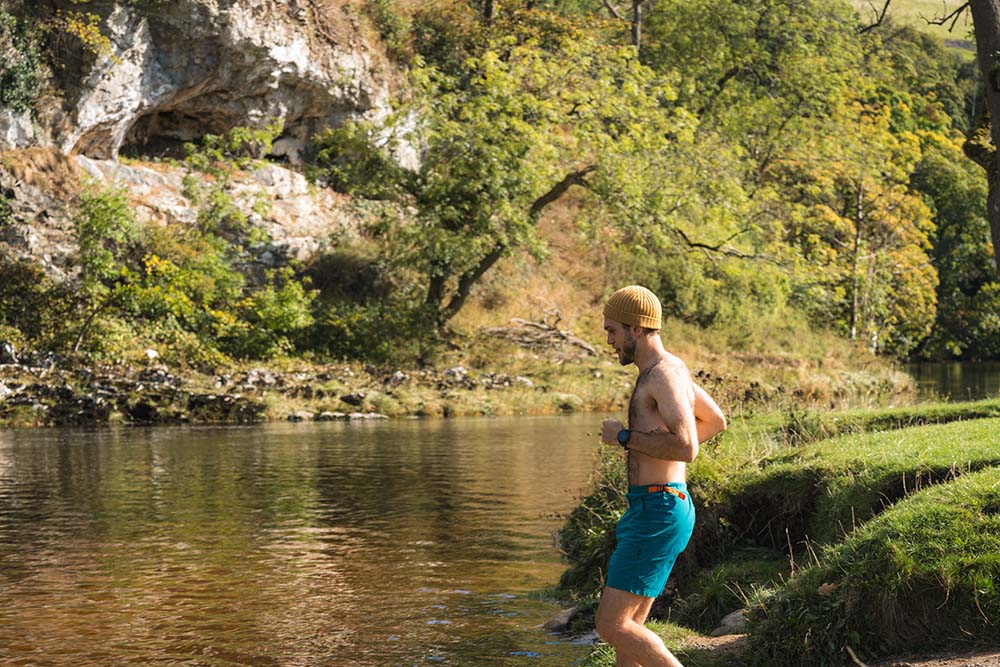
Look for existing, established water access points: Man made structures such as concrete slipways and steps or bare rock are great places to access the water as you are unlikely to be damaging habitats. Just make sure that you take care or keep away from potential danger points such as weirs, sluices and any man made structures such as weirs and water offtakes.
Ask the locals: Local swimmers and water users are often the best source of information on what’s going on in and around a waterway, where potentially sensitive sites are or where the nearest pair of nesting birds are that you need to avoid.

Check the depth:
Even rivers which seem shallow can drop off suddenly. Make sure you test the depth of the water before you take the plunge.
Swim with a buddy:
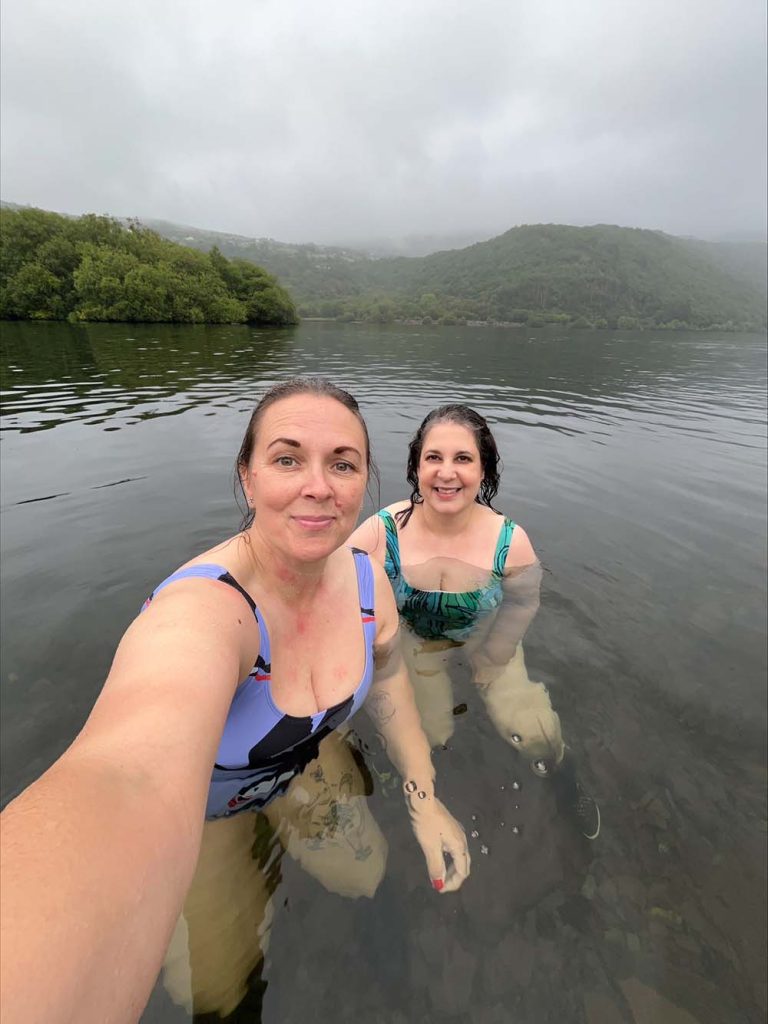
It’s best to take a friend along when you go swimming, just in case you get into any trouble. However, although we would never advise solo swimming, we know it’s not always possible. If you’re on your own, make sure you let someone know where you’re going and when you’ll be back. Keep a mobile phone close by in case of any emergencies.
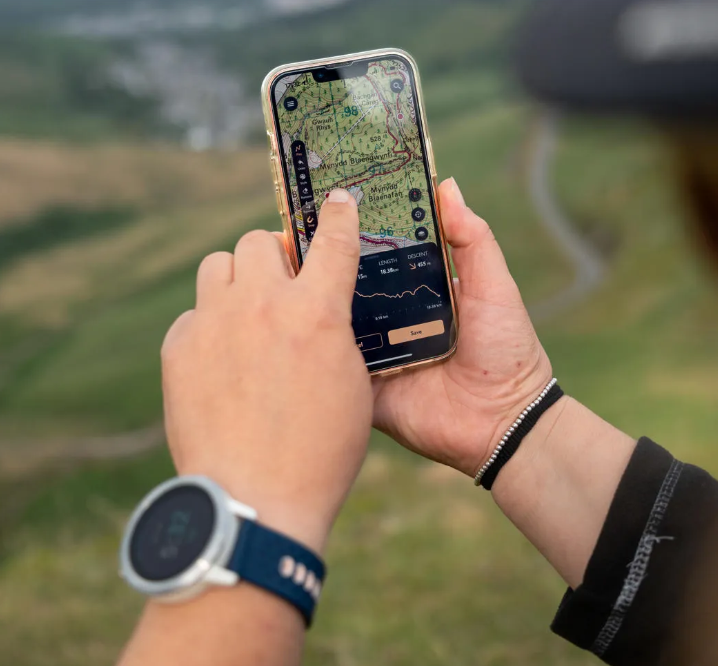
Have an exit plan:
Make sure there’s an easily accessible spot to get into (and more importantly, out of) the river. Bear in mind that you might be exhausted when it’s time to get out, so make sure your exit point isn’t too steep.
Wild Swimming Safety – Cold Water Acclimatisation Tips
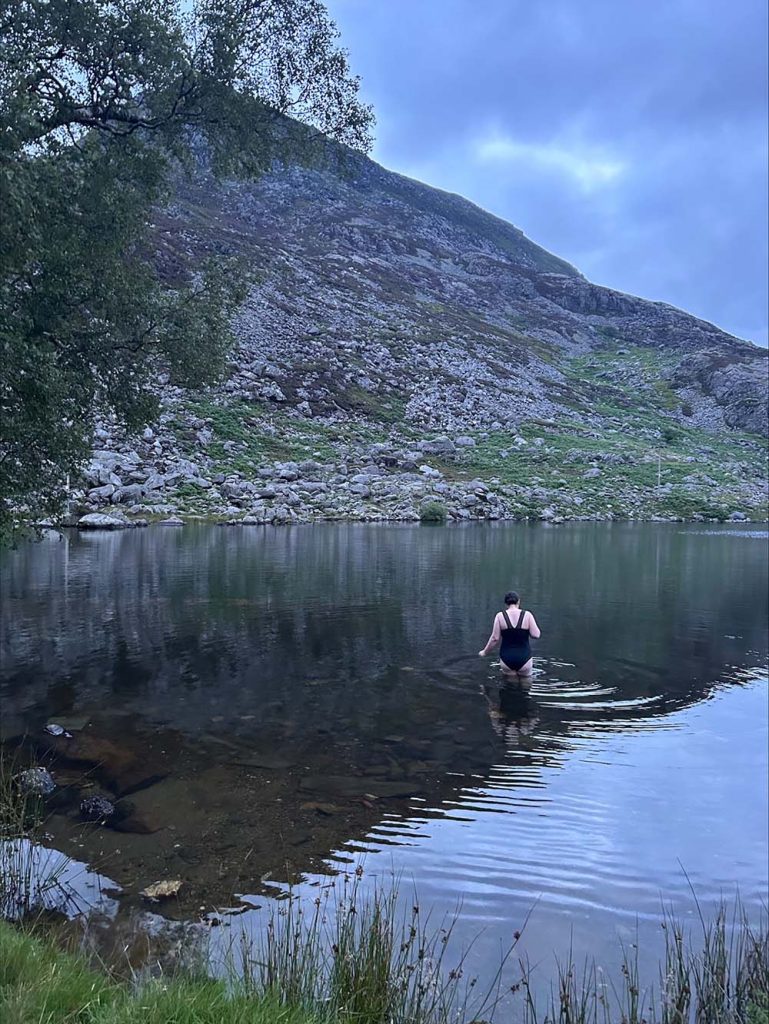
If you go into quite cold water (generally anything under 15 degrees), or if it is your first time then when you get into cold water, the first thing you will feel is the cold shock response – the initial gasp, rapid breathing and increased heart rate and blood pressure. Note: you can still get cold water shock in a wetsuit.
The secret to acclimatising to cold water is just to swim in it, often – at least once a week, and preferably two or three, gradually extending the time that you stay in the water. Get out if you are not comfortable, and don’t set time goals for staying in the water.

Afterdrop is the phenomenon of your body temperature continue to drop even after you get out of cold water and into a warmer environment – so that you feel colder several minutes after you exit than you did in the water. The key to warming up and staying well is to warm up slowly and gradually.
Signs of Hypothermia!
- Shivering
- Cold/blue/grey/dry lips and skin
- Slurred speech
- Tiredness or confusion
- Slow breathing
The safest way to rewarm is to dry off and remove your wet clothes as soon as possible.

Dress in dry warm clothes, including hat gloves and thick socks – ideally lay these out in advance so you can do this quickly. A changing robe may help with getting changed and drying you at the same time. Have a hot drink and maybe a snack. Keep yourself and others safe by waiting until you have warmed up before driving.
Safety Tips To Remember!
- Try to always go with someone else (even if they’re just spectating)
- Always tell someone where you are going and send them the OS route
- Wear a colourful hat or tow float for buoyancy
- Enter the water slowly to reduce the risk of getting cold water shock
- If it’s windy, keep an eye out on your entry point and stay within your depths whilst swimming parallel to the shore
- Be cold water aware!
Wild Swimming Kit List
Once you’ve done your safety research and decided which location you’re starting your wild swimming adventure from, it’s time to go! Here’s a few kit bits and safety tips to get you started.
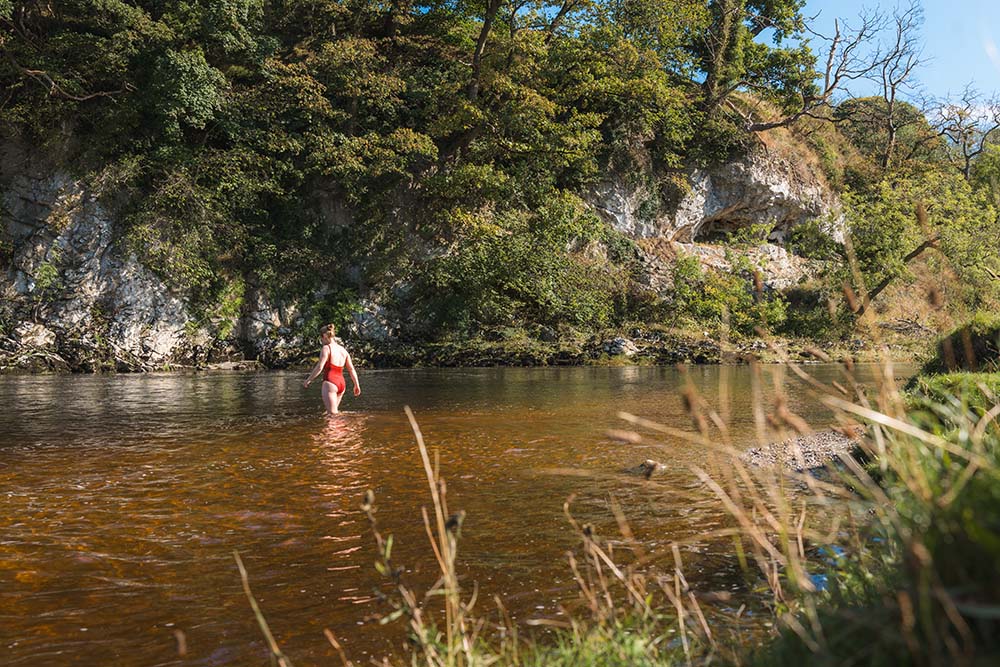
Swimwear / wetsuit
Wear a brightly coloured swim suit or swim hat, especially if swimming anywhere with boat traffic or other people around. If you were to get in any trouble you want people to be able to spot you as easily as possible.
Tow Float – important for safety when open water swimming

Tow floats are useful to cling onto if anything was to go wrong in the water, such as a heart attack. They are also useful for taking your stuff from A to B or taking your car keys. Also if you’re anywhere near boat traffic or rowers, to make yourself as visible as possible (look how dark the pic above is, without the float Emily might not be seen as easily)
Lots of warm layers (for before and after)
We recommend merino base layers for their excellent insulating properties, a warm coat and thick socks. Also make sure you have a warm, dry woolly hat and gloves for after

EXPLORE THE
OS Shop
We are with you every step of the way. Shop our trusted walking and hiking maps and guidebooks so you can explore the outdoors with confidence.
Go to the shopA changing robe / towel
Changing robes have become a huge phenomenon with many people who don’t surf or wild swim enjoying the benefits of a super fluffy waterproof robe just for dog walking or shopping when it’s cold and wet. If you haven’t got one it’s definitely something to add to your wishlist as they can be quite pricey. Towelling changing robes are also really useful for privacy on the waterside.
Waterproof / Old Footwear
Take a pair of Crocs or any footwear you don’t mind getting wet. Something slip on is easiest to protect feet from cobbles or muddy banks.
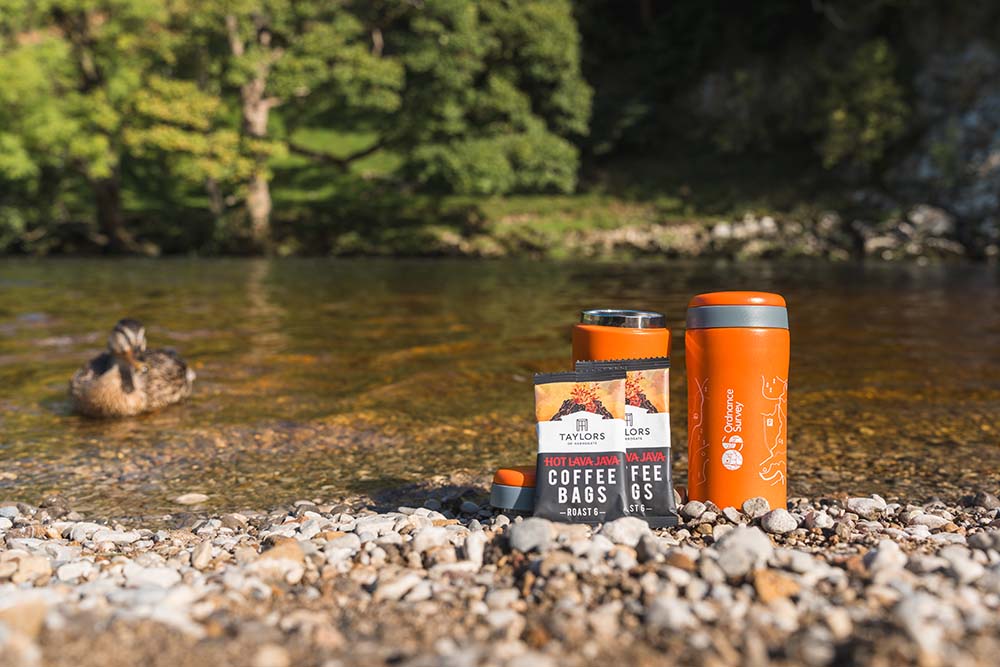
And of course, don’t forget to pack a hot flask with Taylor’s delicious coffee (or tea!) to warm up with after.
A big thankyou to OS Champion Natasha Sones, a wild swimmer and blogger from Suffolk family outdoor adventure travel blog for all this great advice take a look at her website www.natashasoneseditorial.com and also to OS Champions Tom and Essi Troughton for their top tips! Find Tom and Essie on Instagram @troughtandabout
